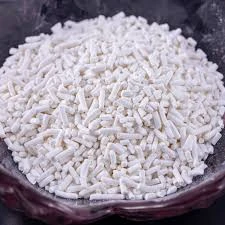
acetic acid as preservative
Acetic Acid as a Preservative An Overview
Acetic acid, often recognized as the main component of vinegar, is a versatile organic compound widely used in the food industry for its preservative qualities. Its unique properties allow it to inhibit the growth of spoilage and pathogenic microorganisms, making it an effective preservative for various food products.
Historical Context
The use of acetic acid as a preservative dates back thousands of years. Ancient civilizations utilized vinegar not only for its flavor-enhancing qualities but also as a means of food preservation. The antimicrobial properties of acetic acid have been exploited in various traditional preservation techniques, such as pickling, where vegetables and fruits are submerged in vinegar or vinegar solutions. This method not only extends the shelf life but also adds a distinctive tangy flavor to the preserved foods.
Mechanism of Action
Acetic acid acts as a preservative primarily through its ability to lower the pH of food product environments. Many spoilage organisms, including bacteria and molds, thrive in neutral or slightly alkaline conditions. By introducing acetic acid, the pH of the food drops, creating an environment that is inhospitable to these microorganisms. Additionally, acetic acid can disrupt the cellular processes of bacteria, leading to their death or inhibition. This dual action ensures that food remains safe and fresh for a longer duration.
Applications in Food Preservation
acetic acid as preservative

Acetic acid is most commonly associated with pickling, where vegetables such as cucumbers, carrots, and onions are preserved in vinegar solutions. Beyond pickles, acetic acid is also frequently used in salad dressings, sauces, and marinated products. It can enhance flavors while acting as a barrier against spoilage. Furthermore, its application has expanded into the dairy industry, where it can be used to extend the shelf life of certain cheese products.
In commercial food production, acetic acid is also employed in the preservation of processed meats. Its inclusion in marinades and brines helps inhibit microbial growth, ensuring food safety without compromising flavor. The use of acetic acid in these applications aligns with consumer demands for natural preservatives, as many people are increasingly avoiding synthetic additives.
Safety and Regulatory Considerations
The use of acetic acid as a food preservative is generally recognized as safe (GRAS) by various food safety authorities, such as the U.S. Food and Drug Administration (FDA). It is a naturally occurring substance, making it an attractive option for those seeking cleaner labels on food products. However, regulation concerning the allowable concentrations of acetic acid varies by country, and food producers must adhere to these guidelines to ensure consumer safety.
Conclusion
As the food industry strives for sustainability and cleaner, more natural products, acetic acid's role as a preservative will likely continue to grow. Its effectiveness in prolonging shelf life while enhancing flavors makes it a favored choice among manufacturers and consumers alike. From traditional pickling techniques to modern applications in packaged foods, acetic acid exemplifies how a simple compound can greatly benefit food preservation practices. As research advances and culinary trends evolve, acetic acid is poised to remain a staple in the quest for safe, flavorful, and longer-lasting food options.
-
Understanding Synthetic Rubber OptionsNewsApr.27,2025
-
Trichloroisocyanuric Acid: Essential for Clean and Safe WaterNewsApr.27,2025
-
Sodium Dichloroisocyanurate: Key to Safe Water TreatmentNewsApr.27,2025
-
Sodium Acid Pyrophosphate: Essential in Modern Food ProcessingNewsApr.27,2025
-
Essential Water Treatment ChemicalsNewsApr.27,2025
-
Denatured Alcohol and Its Industrial UsesNewsApr.27,2025
-
The Versatile Uses of Sodium BicarbonateNewsApr.24,2025
Hebei Tenger Chemical Technology Co., Ltd. focuses on the chemical industry and is committed to the export service of chemical raw materials.
-

view more DiethanolisopropanolamineIn the ever-growing field of chemical solutions, diethanolisopropanolamine (DEIPA) stands out as a versatile and important compound. Due to its unique chemical structure and properties, DEIPA is of interest to various industries including construction, personal care, and agriculture. -

view more TriisopropanolamineTriisopropanolamine (TIPA) alkanol amine substance, is a kind of alcohol amine compound with amino and alcohol hydroxyl, and because of its molecules contains both amino and hydroxyl. -

view more Tetramethyl Thiuram DisulfideTetramethyl thiuram disulfide, also known as TMTD, is a white to light-yellow powder with a distinct sulfur-like odor. It is soluble in organic solvents such as benzene, acetone, and ethyl acetate, making it highly versatile for use in different formulations. TMTD is known for its excellent vulcanization acceleration properties, which makes it a key ingredient in the production of rubber products. Additionally, it acts as an effective fungicide and bactericide, making it valuable in agricultural applications. Its high purity and stability ensure consistent performance, making it a preferred choice for manufacturers across various industries.











